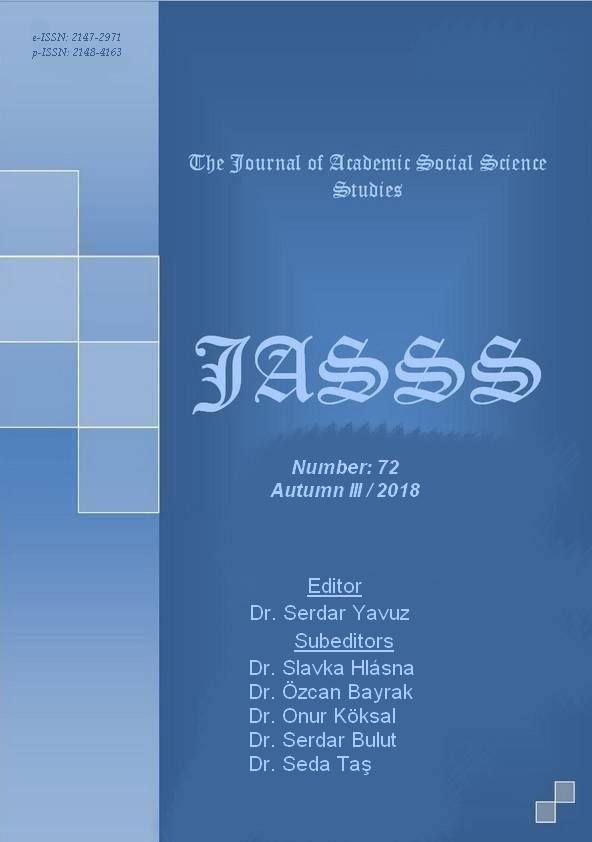Author :
Abstract
Bu araştırmanın amacı, sekizinci sınıf öğrencilerinin buharlaşma ve kaynama kavramları ile ilgili anlayışlarının tespiti ve bu anlayışları aşina olmadıkları başka durumlara transfer edebilme düzeylerini tespit etmektir. Araştırma nitel çalışmalarda sıklıkla kullanılan durum (örnek olay) çalışmasıyla yürütülmüştür. Araştırmanın katılımcılarını 2015-2016 öğretim yılı güz döneminde Türkiye’nin bir ilinde bulunan bir devlet ortaokulunun sekizinci sınıfta öğrenim görmekte olan 8 kız 6 erkek olmak üzere toplam 14 öğrenci oluşturmuştur. Bu araştırmada veriler, araştırmacılar tarafından hazırlanan 6 maddelik görüşme formuyla toplanmıştır. Geliştirilen 6 maddenin ilk 3’ü ortaöğretim fen bilimleri kitaplarında yer alan içerik gözetilerek oluşturulmuştur. Diğer 3’ü ise önceki üç farklı duruma alternatif örnekler içermekte ve bu yolla öğrencilerin bahsi geçen kavramlara ilişkin transfer düzeylerini tespit etmeyi amaçlamaktadır. Elde edilen veriler, betimsel analiz yöntemi kullanılarak çözümlenmiştir. Araştırma sonucunda, öğrencilerin buharlaşma ve kaynama kavramlarına ilişkin birçok kavram yanılgısına sahip oldukları tespit edilmiştir. Öğrencilerin su yerine buharın ısındığı, sıcaklığın aktarıldığı, sıcaklık kaybının serinlik hissi verdiği, havasız ortamda yemeklerin daha iyi piştiği, ısının sıcak olduğu, soğuk cismin ısıya sahip olmadığı, soğuk suyun kaldırma kuvvetinin daha fazla olduğu ve böceklerin kabuğa sahip olmasından dolayı soğuk suda dengede kalabildikleri gibi görüşlere sahip oldukları görülmüştür. Bu görüşlerin yanı sıra öğrencilerin buharlaşma olayının kaynama olayından sonra meydana geldiği, bir sıvının buharlaşması için ısıtılması gerektiği gibi kavram yanılgılarına da sahip oldukları belirlenmiştir.
Keywords
Abstract
Coherence and transfer of the concepts of evaporation and boiling in similar contexts .The purpose of this research is to determine the understanding of the concepts of evaporation and boiling concepts of eighth grade students and their ability level of transfer to other situations they are unfamiliar with .The research has ben conducted with the case study which is frequently used in qualitative studies. The participants of the research were 14 students including 8 girls and 6 boys studying in the 8th grade of a public school in a province of Turkey in the fall semester of 2015-2016 academic year. In this research , data were collected with interview form including 6 items, prepared by the research. The first three items of 6 items were created bu taking consideration the content of science books in the secondary education. The other three items contain alternative example of the previous three different situations and by this way it aims to determine the transfer levels of the students about the mentioned concepts. The results of the research were analyzed by using descriptive analysis method. As a results of the research, it has ben found that the students have many misconseptions about the concepts of evaporation and boiling. İt has ben many many misunderstanding among the students such as; the steam is getting hotter instead of water ,temperature transferred, lack of heat gives the feeling of coolness, cooking better meal in stuffy atmosphere, heat is hot, cold matter does not have heat, buoyancy of cold water has much than hot water, the sheels of insects help them stay in balance in cold water. In addition to these opinions, it has been determined that the students have misconceptions as evaporation event occurs after boiling and a liquid must be heated tu evaporate.





